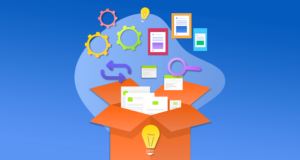Which Agile Framework Should Your Company Adapt

Is Scrum Agile?
The question of “is scrum agile” is one we often get, and we should address right from the get-go. Many get confused between these two terms. Agile is for an entire philosophy regarding project management. On the other hand, scrum is a particular methodology within the agile philosophy in order to successfully and effectively run a project.
The Advantages & Disadvantages of an Agile Framework
Like all things in life, agile frameworks also have their pros and cons. Take a look at the advantages and disadvantages below to decide whether this is the correct business solution for you.
Advantages of Agile Frameworks:
- Daily team meetings (scrums) can be beneficial to determine if everyone is on the same page during the process and to maintain control over the deliverables.
- Productivity in teams will increase due to the collaborative nature of the agile framework.
- Transparency in the process leads to accountability from individuals and teams.
- A disciplined agile enterprise helps to foster an organizational culture that is focused on learning, changing, and innovating.
- It is best to implement for boosting commercial success. Especially if the overall objective is growing the organization's product offering or income.
Disadvantages of Agile Frameworks:
- A lack of ownership and pride from individuals who collaborated in the process.
- Daily check-ins can become exhausting with a lot of talking, but with no commitment and anyone actually "pulling the trigger".
- It tends to take away the limelight from the self-organized teams because there is constant interference from group leaders, but also almost makes them extinct when it comes to decision-making.
- A one size, fits all approach to agile frameworks does not apply to all businesses.
- Larger teams, with demographic differences, could pose a challenge in this framework due to time zones, availability and language barriers.
The Different Types of Agile Frameworks
There are quite a few different agile frameworks out there. But, we’re going to explain the method behind the agile madness to some of the most popular ones:
SAFe (Scaled Agile Framework)
SAFe is a combination of Agile, Lean and DevOps principles. Although, many agile experts find SAFe to be almost too prescribed and a bit complex, it still holds a lot of benefits for those who manage to get it right.
SaS (Scrum@Scale)
This is one of the newest members to the Agile framework family and literally attempts to do and accomplish what a Scrum does within a single team but only with the bigger picture in mind. Therefore, the goal of SaS is to keep the product and the process cycles separate, but with an overlap.
SoS (Scrums of Scrums)
This framework is ideal for teams of 3 – 9 teams consisting of 3 – 9 team members each. In an SoS framework, team leaders meet on a daily basis to discuss completed projects and what the next steps are.
LeSS (Large Scale Scrum)
This is an adaptation of the single team Scrum. The basic concept behind it is to only talk when needed and about things that matter the most at that specific time. It encourages cross-team interactions to promote learning and growth among team members.
Nexus
This framework’s main goal is to reduce complexity and the dependency that teams so often have on each other by creating opportunities for processes, communication and product structures to change. Nexus usually consists of a group of 3 – 9 scrum teams with just one product backlog and product owner.
DaD (Disciplined Agile Delivery)
This framework gives guidance on the what and the things you need in order to make it happen, but how you do it is completely up to you.
Enterprise Kanban
Unlike many Agile frameworks, Kanban couldn’t be bothered about how your business is structured. Its main focus is to optimize workflow in accordance to customer needs vs expectations, promoting continual growth and learning and encouraging leadership. Kanban is a particular favorite since it can be applied to any value stream or workflow at any level of a company/business or project process.
Which Framework Will Work for You?
There is not a one-size-fits-all-framework for all organizations and businesses, and you need to be able to differentiate which will work best in your particular situation. These are a few examples of certain frameworks that are best suited to certain circumstances. Take a look at each agile frameworks comparison and see which relate to you:
Flexibility vs Regulation
Within certain industries such as oil & gas and banking, regulatory compliance plays a massive role in any scaling model. Their models demand detailed audit trails and traceability that is generally not supported when it comes to scrum ceremonies. In these cases, the frameworks to consider are SAFe and DaD.
The Trouble With the Value Chain
Certain departments within an organization (such as HR) often play a supportive role with a lot of internal demands. But these teams who are often reliant on other departments with a more traditional command-control methodology cannot be expected to deliver as frequently as other teams who are not as codependent on each other. In these situations, the focus should be on trying to simplify decision-making and also promote autonomy within the teams. The frameworks that are best suited to these kinds of situations are SoS, DaD and SAFe.
At the end of the day, if you feel your business can adopt a scaled agile framework, there are a number of online consultants who can assist with the process. If you are not sure about finding the right fit, you can read up on working with a consultant here. Or, if you have more questions about a specific agile framework for your business, feel free to contact us .




